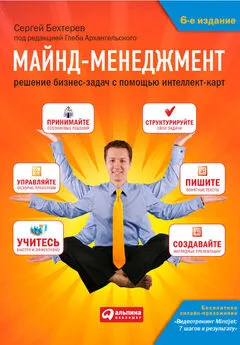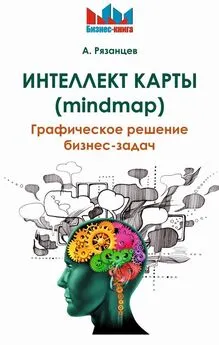Нина Пусенкова - Английский язык. Практический курс для решения бизнес-задач
- Название:Английский язык. Практический курс для решения бизнес-задач
- Автор:
- Жанр:
- Издательство:Эксмо
- Год:2008
- Город:М.:
- ISBN:978-5-699-29820-4
- Рейтинг:
- Избранное:Добавить в избранное
-
Отзывы:
-
Ваша оценка:
Нина Пусенкова - Английский язык. Практический курс для решения бизнес-задач краткое содержание
Для студентов бизнес-школ, языковых, финансовых и экономических вузов, а также для всех, кто хотел бы усовершенствовать свой деловой и финансовый английский.
Английский язык. Практический курс для решения бизнес-задач - читать онлайн бесплатно ознакомительный отрывок
Интервал:
Закладка:
Exercise 2. Describe how companies take care of their employees. Use the following terms.
medical insurance
life insurance
paid holidays
sick leaves
retirement programs (pension plans)
training and development programs
child care
recreational activities
transportation allowance
maternity/paternity leaves
credit union facilities
ESOP (Employee Stock Ownership Plans)
profit sharing
bonuses
relocation expenses
fringe benefits
wages and salaries
stock options
induction process
mentors
job security
grievance committee
outplacement services
severance pay
employment contract
cafeteria plans [1] Cafeteria plans are flexible benefits that became popular during the 1980s. With these plans, an employee allocates a set amount of benefit dollars according to personal choice.
Exercise 3. You are a journalist working for Business Week and you are to interview Frederick Herzberg who developed the Two-Factor Theory. Invent a dialogue between these two individuals using the following briefing materials.
Herzberg’s Two-Factor Theory
Frederick Herzberg’ s theory is known as the motivator-hygiene theory. His basic premise is that dissatisfaction and satisfaction are not opposite ends of a single continuum. Rather, the opposite of dissatisfaction is no dissatisfaction, and the opposite of satisfaction is no satisfaction.
The way to move an individual from dissatisfaction to no dissatisfaction is by utilizing hygienes. These are factors that are extrinsic to the work itself. Hygienes are factors concerning the environment within which the work is performed like the color of the walls, the temperature of the room, or the paving in the company parking lot.
Unfortunately, hygienes are not the factors that can move your employees toward satisfaction. These factors simply placate employees, but do nothing to truly motivate them. Before the real motivation can be addressed, employees must have sufficient hygienes so as not to be dissatisfied.
To move employees from no satisfaction to satisfaction, motivators must be used. These are the factors that are intrinsic to the work itself. Examples of motivators include more autonomy, opportunities for promotion, and delegation of responsibility.
Exercise 4. Discuss the following 10 commandments of motivation through human relations and create 10 commandments of your own.
1. Speak to people. There is nothing as nice as a cheerful word of greeting .
2. Smile to people. It takes seventy-two muscles to frown, only fourteen to smile.
3. Call people by name . The sweetest music to anyone’s ear is the sound of his or her own name.
4. Be friendly and helpful. If you want to have friends, be a friend.
5. Be cordial. Speak and act as if everything you do is a genuine pleasure.
6. Be genuinely interested in people. You can like almost everybody if you try .
7. Be generous with praise and cautious with criticism.
8. Be considerate of the feelings of others. There are usually three sides to a controversy: your side, the other fellow’s side, and the right side.
9. Be alert to giving service. What counts most in life is what we do for others .
10. Add to this a good sense of humor, a big dose of patience, and a dash of humility, and you will be rewarded many times.
Exercise 5* [2] К упражнениям, отмеченным знаком *, в конце книги даются ключи.
. Fill in the blanks using terms given below.
Determining the Role of Money in Motivation
Motivation theories can provide you with the motivational…….. to pull in order to increase the motivation of your………….
People are more inclined to deliver………. that is minimally acceptable. Some even wonder today if Americans are still in search of excellence, or they are in search of mediocrity instead. In the past, the motivation technique was a scare tactic. «Do it or else…» was the refrain of the…………. manager. It no longer……… the desired results today, in the…….. of employee’s involvement in………. and………..
Motivation is a complex issue requiring an understanding of individuals. It is no longer answered with just money. In the past, a manager might have been able to raise employee’s……. and provide some………. to improve motivation. Simple material……. does not get the same mileage in today’s workplace.
In fact, money is not the prime motivation…….. any longer. Adam Smith suggested in 1776 that self-interest for monetary……. is the primary motivator of people. While some still…….. to this………, most researchers agree that……………. has become more important today.
Herzberg suggested that money is a…….. That is, money is……… to the work itself and does not really move people toward satisfaction. Instead, people are said to desire autonomy……… work, and more creative……..
The……… of money as a motivator is generally in what it can buy. Once basic… have been met, more money is not necessarily a primary motivator for people. There is also a symbolic meaning of money that can be the actual motivator rather than the money itself.
Terms:
rewards, salary, driver, value, adhere, job satisfaction, assumption, extrinsic, needs workforce, environment, command-and-control, delivers, decision-making, fringe benefits, remuneration, gain, hygiene, challenging, levers, performance, delegation of authority
Exercise 6. Translate into English.
Теория Z Уильяма Учи
Уильям Учи, профессор Калифорнийского университета, разработал в 1981 году теорию Z, которая сочетает в себе черты американского и японского управленческого стиля. В организации типа Z работники участвуют в процессе принятия решений и способны выполнять множество самых разнообразных производственных заданий. Такой подход, сходный с культурой японских компаний, служит важной движущей силой повышения производительности труда при одновременном уменьшении прогулов и текучести кадров. Теория Z подчеркивает значимость таких аспектов, как ротация работ, расширение навыков сотрудников, преимущество специалистов широкого профиля по сравнению с узкой специализацией, а также потребность в постоянном развитии и подготовке кадров.
По мнению Уильяма Учи, работники хотят построить дружеские взаимоотношения на основе сотрудничества с коллегами и работодателями. В рамках его теории работники нуждаются в поддержке со стороны компании и высоко ценят рабочую среду, в которой семья, культура, традиции и социальные институты имеют не менее важное значение, чем сама работа. У таких сотрудников очень высоко развито чувство порядка, дисциплины и моральное обязательство усердно трудиться. Наконец, в рамках теории Z предполагается, что работники будут трудиться с максимальной отдачей, если менеджмент будет их поддерживать и заботиться об их благосостоянии.
Важной предпосылкой данной теории является то, что менеджмент должен быть уверен в своих сотрудниках. Теория Z предполагает, что необходимо развивать такую рабочую силу, которая сохраняла бы преданность своей компании и предпочитала бы работать в ней всю жизнь. В таком случае, когда сотрудник дорастет до уровня старшего менеджмента, он будет досконально знать компанию и ее деятельность и сможет эффективно применять теорию Z к новым сотрудникам.
Lesson 2
Corporate Culture
Read and translate the text and learn terms from the Essential Vocabulary.
How to Achieve Excellence by Managing the Culture in your Company
In recent years, corporate culture has been a topic widely discussed by managemement gurus offering their services to organizations desperate to improve their performance. Serious managers, naturally, question whether the focus on corporate culture is merely a passing fad, or if it indeed has a long-term beneficial effect on the way organizations are managed. Those who look for a quick fix for making organizations effective may be disappointed. We know that societal culture develops slowly and endures for a long time. Similarly, organizational culture needs to be nurtured and managed. Culture must be concerned with all aspects of management. In addition, an organization culture must also guide the relationships with certain stakeholders outside the enterprise, especially customers, but also suppliers, creditors, and even competitors who deserve an operating culture of fair play in the competitive market place.
Most managers today would probably agree that the effectiveness and efficiency of an organization are influenced by its culture. This means, in turn, that key managerial functions will be carried out differently in organizations with different cultures.
Although some management advocates would have us believe that the concepts of corporate culture represent the latest thinking in management theory, they are not. In 431 B.C., Pericles urged the Athenians, who were at war with the Spartans, to adhere to values underlying the culture – democracy, informality in communication, the importance of individual dignity, and promotion based on performance. Pericles realized that these values might mean victory or defeat. You will probably note that these values are not so different from those espoused by many U.S. companies.
As it relates to organizations, culture is the general pattern of behavior, shared beliefs and values that members have in common. Culture can be inferred from what people say, do, think, and how they behave within an organizational setting. It involves the learning and transmitting of knowledge, beliefs, and patterns of behavior over time. This also means that an organization culture is fairly stable and does not change quickly. It often sets the tone for the company and establishes implied rules for how people should behave.
Читать дальшеИнтервал:
Закладка:





![Владимир Аракин - Практический курс английского языка 3 курс [calibre 2.43.0]](/books/1072035/vladimir-arakin-prakticheskij-kurs-anglijskogo-yazyk.webp)




